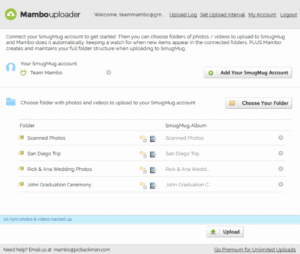-
Table of Contents
- Step-by-step guide to accessing internet properties on Windows PC
- Understanding the importance of internet properties and how to access them
- Troubleshooting common issues with internet properties on Windows PC
- Exploring advanced settings in internet properties on Windows PC
- Tips and tricks for optimizing internet properties on your Windows PC
- Q&A
Opening Internet Properties on Windows PC – Simplified Assistance
Opening internet properties on a Windows PC provides access to various settings and configurations related to internet connectivity and browser preferences. This guide will explain the different methods to open internet properties on your Windows PC, allowing you to customize your internet experience and troubleshoot any connectivity issues.
Step-by-step guide to accessing internet properties on Windows PC
Internet properties are an essential aspect of managing your Windows PC’s internet settings. Whether you need to configure your network connection, clear your browsing history, or adjust security settings, accessing internet properties is the first step. In this step-by-step guide, we will walk you through the process of opening internet properties on your Windows PC, ensuring that you have all the necessary information at your fingertips.
To begin, let’s explore the various methods you can use to access internet properties. The most common way is through the Control Panel. To access the Control Panel, click on the Start button, located at the bottom left corner of your screen. From the Start menu, select Control Panel. Once the Control Panel window opens, locate the Network and Internet category and click on it. Within this category, you will find the Internet Options icon. Click on it to open the Internet Properties window.
Alternatively, you can access internet properties directly from your web browser. If you are using Internet Explorer, click on the gear icon in the top right corner of the browser window. From the drop-down menu, select Internet Options. This will open the Internet Properties window. If you are using Microsoft Edge, click on the three-dot menu icon in the top right corner, then select Settings. Scroll down and click on the View advanced settings button. Finally, click on the Open Internet Properties button to access the Internet Properties window.
Now that you have successfully opened the Internet Properties window, let’s explore its various tabs and options. The first tab you will encounter is General. Here, you can configure your homepage, manage your browsing history, and adjust your browser’s appearance. You can also delete temporary internet files and cookies, which can help improve your browsing experience.
Moving on to the Security tab, you can adjust the security level for different zones, such as the Internet, Local Intranet, Trusted Sites, and Restricted Sites. This allows you to customize the level of security for each zone, depending on your preferences and needs. You can also manage certificates and enable or disable various security features.
Next, we have the Privacy tab. Here, you can control how websites handle your personal information, such as cookies and location data. You can adjust the privacy settings to strike a balance between protecting your privacy and allowing websites to provide personalized content and services.
The Content tab allows you to manage content filters, such as blocking or allowing specific websites, setting up parental controls, and enabling or disabling auto-complete features. This tab is particularly useful for those who want to restrict access to certain websites or ensure a safer browsing experience for children.
Finally, we have the Connections tab. Here, you can configure your network settings, set up a VPN connection, or manage proxy settings. This tab is crucial for those who need to connect to a specific network or use a proxy server for their internet connection.
In conclusion, accessing internet properties on your Windows PC is a straightforward process that can be done through the Control Panel or directly from your web browser. Once you have opened the Internet Properties window, you can explore its various tabs and options to configure your internet settings according to your preferences and needs. Whether you want to adjust security levels, manage browsing history, or customize privacy settings, internet properties provide you with the necessary tools to optimize your internet experience.
Understanding the importance of internet properties and how to access them
Internet properties are an essential aspect of managing and customizing your browsing experience on a Windows PC. Whether you want to change your homepage, clear your browsing history, or adjust your privacy settings, accessing internet properties is the key. In this article, we will explore the importance of internet properties and guide you on how to access them on your Windows PC.
Understanding the significance of internet properties is crucial for anyone who wants to have control over their online activities. Internet properties allow you to modify various settings that affect your browsing experience. By accessing these properties, you can personalize your browser, enhance security, and optimize performance.
To access internet properties on your Windows PC, there are several methods you can use. One way is to open the Control Panel and navigate to the Network and Internet section. From there, you can find the Internet Options icon, which will open a window containing all the internet properties.
Another method is to open your preferred web browser and click on the gear icon located in the top-right corner. This will open a drop-down menu, where you can select the Internet Options. Alternatively, you can also access internet properties by typing “Internet Options” in the search bar of the Start menu.
Once you have accessed the internet properties, you will be presented with a range of tabs, each containing different settings. The General tab allows you to set your homepage, manage browsing history, and configure tab settings. Here, you can also customize the appearance of your browser by changing the font size and colors.
The Security tab is where you can adjust the security level for different zones, such as the Internet, Local Intranet, Trusted Sites, and Restricted Sites. By modifying these settings, you can protect yourself from malicious websites and potential threats.
The Privacy tab is particularly important for those concerned about their online privacy. Here, you can control how websites handle your personal information, manage cookies, and enable or disable pop-up blockers. Adjusting these settings can help safeguard your privacy and prevent unwanted tracking.
The Content tab allows you to control the content that is displayed on websites. You can enable or disable features such as automatic image downloading, Java, and ActiveX controls. This tab also provides options for managing certificates and autocomplete settings.
The Connections tab is where you can configure your internet connection settings. You can set up a proxy server, establish a VPN connection, or configure dial-up settings if needed. This tab is particularly useful for those who require specific network configurations.
Lastly, the Advanced tab contains advanced settings that are typically used by experienced users or for troubleshooting purposes. Here, you can reset your browser settings, enable or disable specific features, and manage certificates and security protocols.
In conclusion, understanding the importance of internet properties and knowing how to access them on your Windows PC is essential for customizing your browsing experience, enhancing security, and optimizing performance. By accessing internet properties, you can personalize your browser, protect your privacy, and configure various settings to suit your needs. Whether you choose to access internet properties through the Control Panel or your web browser, the options available within these properties allow you to have full control over your online activities. So, take the time to explore and utilize the internet properties on your Windows PC to make the most out of your browsing experience.
Troubleshooting common issues with internet properties on Windows PC
How to Open Internet Properties on My Windows PC – Help Options
Internet properties are an essential aspect of managing your internet connection on a Windows PC. They allow you to configure various settings, such as proxy servers, security levels, and privacy options. However, sometimes you may encounter issues with accessing or modifying these properties. In this article, we will explore some common problems related to internet properties on Windows PCs and provide helpful solutions.
One common issue users face is not being able to locate the internet properties option. To open internet properties, you can follow a few simple steps. First, right-click on the Start button and select “Control Panel” from the context menu. In the Control Panel window, locate and click on the “Network and Internet” category. Within this category, you will find the “Internet Options” link. Clicking on this link will open the Internet Properties window, where you can make the necessary changes.
Another problem users encounter is when the internet properties window fails to open or crashes unexpectedly. This can be frustrating, especially when you need to modify settings urgently. To troubleshoot this issue, you can try a few different approaches. Firstly, you can restart your computer and try opening the internet properties window again. Sometimes, a simple restart can resolve temporary glitches. If that doesn’t work, you can try running a system file checker scan to check for any corrupted system files. To do this, open the Command Prompt as an administrator and type “sfc /scannow” without the quotes. This scan will identify and repair any corrupted files that may be causing the issue.
In some cases, users may find that certain options within the internet properties window are grayed out or inaccessible. This can occur due to various reasons, such as group policy settings or malware infections. To regain access to these options, you can try a few different methods. Firstly, you can check if your user account has administrative privileges. Only administrators can modify certain settings within the internet properties window. If you are not an administrator, you will need to contact your system administrator for assistance. Additionally, you can run a malware scan using reliable antivirus software to ensure that your system is not infected. Malware infections can sometimes restrict access to certain settings, including those within the internet properties window.
Sometimes, users may encounter issues with specific settings within the internet properties window, such as proxy server configurations. If you are unable to modify or disable proxy server settings, there are a few troubleshooting steps you can try. Firstly, you can check if any third-party software or browser extensions are interfering with the proxy settings. Temporarily disabling or uninstalling such software can help identify the cause of the problem. Additionally, you can try resetting the internet settings to their default values. To do this, open the Internet Properties window, navigate to the “Advanced” tab, and click on the “Reset” button. This will reset all internet settings, including proxy configurations, to their default values.
In conclusion, internet properties are crucial for managing your internet connection on a Windows PC. However, issues can arise when accessing or modifying these properties. By following the troubleshooting steps outlined in this article, you can overcome common problems related to internet properties and ensure a smooth internet browsing experience on your Windows PC.
Exploring advanced settings in internet properties on Windows PC
How to Open Internet Properties on My Windows PC – Help Options
When it comes to exploring advanced settings in internet properties on your Windows PC, it’s important to know how to access the internet properties menu. This menu allows you to customize various settings related to your internet connection, security, privacy, and more. In this article, we will guide you through the process of opening internet properties on your Windows PC and explore the help options available to assist you.
To begin, let’s discuss the different methods you can use to open internet properties. The most common way is through the Control Panel. Simply click on the Start button, search for “Control Panel,” and open it. Once inside the Control Panel, locate the “Network and Internet” category and click on it. From there, you will find the “Internet Options” icon, which will open the internet properties menu.
Another method to access internet properties is through the Internet Explorer browser. Launch Internet Explorer and click on the gear icon located in the top-right corner of the window. A drop-down menu will appear, and you can select “Internet Options” from there. This will open the internet properties menu directly within the browser.
Now that you have successfully opened the internet properties menu, let’s explore the help options available to you. Within the menu, you will find a “Help” button located at the bottom-right corner. Clicking on this button will open a new window with various help options.
One of the help options is the “General” tab, which provides general information about internet properties and their functions. It includes a brief overview of each tab within the menu and what settings you can customize. This tab is a great starting point if you are new to internet properties and want to familiarize yourself with its features.
The “Security” tab within the help options provides detailed information about the security settings available in internet properties. It explains how to adjust the security level, manage trusted sites, and customize other security-related options. This tab is particularly useful if you want to enhance your online security and protect your computer from potential threats.
The “Privacy” tab focuses on privacy settings and how you can control the information websites collect about you. It explains how to manage cookies, clear browsing history, and customize privacy preferences. This tab is essential for those concerned about their online privacy and want to have more control over their personal information.
The “Content” tab within the help options provides guidance on managing content-related settings. It explains how to enable or disable content filters, set parental controls, and customize other content-related options. This tab is particularly useful for parents who want to ensure a safe browsing experience for their children or individuals who want to filter out certain types of content.
Lastly, the “Advanced” tab offers advanced settings and options for experienced users. It covers various topics such as proxy settings, SSL and TLS configurations, and other technical aspects of internet properties. This tab is ideal for those who have a deeper understanding of internet protocols and want to fine-tune their internet settings.
In conclusion, opening internet properties on your Windows PC is a straightforward process that can be done through the Control Panel or Internet Explorer browser. Once inside the internet properties menu, you have access to various help options that provide guidance on different aspects of internet properties. Whether you want to enhance your security, protect your privacy, manage content, or explore advanced settings, the help options within internet properties are there to assist you.
Tips and tricks for optimizing internet properties on your Windows PC
How to open internet properties on my Windows PC – Help Options
When it comes to optimizing your internet properties on a Windows PC, understanding how to access the internet properties menu is essential. This menu allows you to make changes and adjustments that can improve your browsing experience and overall internet performance. In this article, we will guide you through the process of opening internet properties on your Windows PC, and explore some helpful options that can enhance your internet usage.
To begin, let’s discuss the various methods you can use to open the internet properties menu. The most common way is through the Control Panel. Simply click on the Start button, then navigate to the Control Panel. Once there, you can find the internet properties option and click on it to open the menu. Another method is to open the Run dialog box by pressing the Windows key + R, then type “inetcpl.cpl” and hit Enter. This will directly open the internet properties menu.
Now that you have successfully opened the internet properties menu, let’s explore some of the helpful options available to you. One important option is the Connections tab. Here, you can configure your internet connection settings, such as setting up a proxy server or adjusting your LAN settings. By making the necessary changes in this tab, you can optimize your internet connection for better speed and stability.
Next, let’s move on to the Security tab. This tab allows you to customize your internet security settings. You can adjust the security level for different zones, such as the Internet, Local Intranet, Trusted Sites, and Restricted Sites. By carefully configuring these settings, you can protect your PC from malicious websites and potential threats, while still allowing necessary functionality.
Another useful option is the Privacy tab. This tab enables you to control how websites handle your personal information and browsing history. You can adjust the privacy settings to block or allow cookies, manage your browsing history, and even enable a pop-up blocker. By taking control of your privacy settings, you can enhance your online privacy and protect your personal information.
Moving on, let’s discuss the Content tab. This tab allows you to manage the content that is displayed on websites. You can enable or disable features such as automatic image downloading, Java, ActiveX controls, and more. By customizing these settings, you can improve your browsing experience and even enhance the security of your PC.
Lastly, let’s not forget about the Advanced tab. This tab contains a plethora of advanced options that can further optimize your internet properties. Here, you can tweak settings related to browsing, multimedia, security, and more. It is recommended to have a good understanding of these options before making any changes, as they can have a significant impact on your internet experience.
In conclusion, opening internet properties on your Windows PC is a crucial step in optimizing your internet usage. By accessing the internet properties menu, you can make changes and adjustments that can enhance your browsing experience, improve internet speed and stability, and protect your PC from potential threats. Remember to explore the various tabs, such as Connections, Security, Privacy, Content, and Advanced, to fully utilize the options available to you. With a little bit of tweaking and customization, you can optimize your internet properties to suit your specific needs and preferences.
Q&A
1. How can I open internet properties on my Windows PC?
To open internet properties on your Windows PC, you can follow these steps:
– Right-click on the Start button and select “Control Panel.”
– In the Control Panel window, click on “Network and Internet.”
– Next, click on “Internet Options” to open the internet properties.
2. Is there an alternative way to open internet properties on Windows PC?
Yes, you can also open internet properties on your Windows PC through the following method:
– Press the Windows key + R to open the Run dialog box.
– Type “inetcpl.cpl” in the Run box and press Enter.
– This will directly open the internet properties window.
3. What are the different tabs available in internet properties?
The internet properties window typically consists of several tabs, including General, Security, Privacy, Content, Connections, Programs, and Advanced. Each tab provides different settings and options related to internet browsing.
4. How can I access the Help options in internet properties?
To access the Help options in internet properties, you can follow these steps:
– Open the internet properties window using one of the methods mentioned earlier.
– Once the window is open, click on the “Help” button located at the top-right corner.
– This will provide you with various help options and resources related to internet properties.
5. Can I customize the settings in internet properties?
Yes, you can customize various settings in internet properties according to your preferences. Each tab within the internet properties window allows you to modify specific settings related to security, privacy, content, connections, and more.In conclusion, there are several ways to open internet properties on a Windows PC. One option is to right-click on the Start button and select “Run” from the menu. Then, type “inetcpl.cpl” in the Run dialog box and press Enter. Another option is to open the Control Panel, navigate to the Network and Internet category, and click on “Internet Options.” Additionally, you can open the Run dialog box by pressing the Windows key + R, type “inetcpl.cpl,” and hit Enter. These methods provide easy access to the internet properties on a Windows PC.









